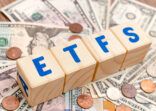Hong Kong’s Securities and Futures Commission (SFC) gave authorisation to UBS AM to distribute the Luxembourg bond Sicavs on Tuesday. The three products are: the Asian High Yield (USD), Multi Income (USD) and US Dollar High Yield funds.
All three funds have outperformed their sector average returns since the inception of the smallest fund, the $20.5m Multi Income bond fund, in December 2017, according to FE Fundinfo (see below).
The best performer is also the largest, the $2.18bn Asian High Yield fund, which has generated a cumulative US dollar return of 12.11% over the period, compared with its 8.58% by its peers, FE Fundinfo data shows.
It is slightly more stable than its category, with 9.39% annualised volatility lower than the average of 9.81%.
Meanwhile, the $997m US Dollar High Yield fund has achieved a 9.50% return and the Multi Income product, which has a 33% allocation to US collateralised bonds, is up 9.02%, compared with their sector averages of 8.77% and 8.62%, respectively.
The US dollar product is more volatile than its peers (11.46% versus 9.43%), as is the Multi income product (7.99% versus 5.91%), according to FE Fundinfo data.
Asian high yield fund
Although UBS is keen to promote all three funds in the current ultra low-to-zero interest rate environment, it highlighted the Asian High Yield product.
“Asia’s bond markets have grown in size and importance over recent years with the Asian credit universe passing the $1trn mark at the start of 2020. Compared to its global counterparts, Asian fixed income offers higher yield and lower duration risk,“ said Ross Dilkes, portfolio manager of the fund.
The fund has a 55.8% weighting to China, and a 44.3% allocation to property issues. Both the country and the sector dominate the Asian high yield investible universe.
UBS Asian High Yield Fund: allocations

Source: Fund factsheet, 31 July 2020
Dilkes argues that “with significant monetary and fiscal measures by central banks in Asia, particularly China, Asian high yield fundamentals are solid”.
UBS AM forecasts Asian high yield defaults to range between 5-6% over the next 18 months, which is lower than those in the US and Europe, he noted.
“At this level, investors in Asian high yield bonds are well compensated for risk given that yields remain close to historical highs,” he said.
Dilkes also expects an increase in “sustainable investing opportunities” in the Asian high yield sector.
“The overarching commitment of policy-makers to encourage sustainable investment can be expected to help investors achieve an attractive risk-adjusted return,” he said.
In particular, “the push for renewable energy is gaining momentum”, with” several solar and wind energy companies with strong fundamentals in India that are attractive in terms of outlook and management strength,” Dilkes added.
Several asset managers, such as Blackrock, Kuala Lumpur-based Affin Hwang Asset Management, which this week launched an Asian high yield feeder fund, and BE Union Investment, have pressed the case for the asset class as a neglected source of income.
Careful individual bond selection can mitigate anxieties about default risks and counter periods of general market volatility, while also taking advantage of attractive valuations relative to global high yield credit as well as to historical levels, according to Blackrock’s head of Asian credit, Neeraj Seth.
Moreover, investors can participate in a region still characterised by rapid structural change through its adoption of new technologies and its shift to urbanisation, concurrent with the rising wealth of its population.


















